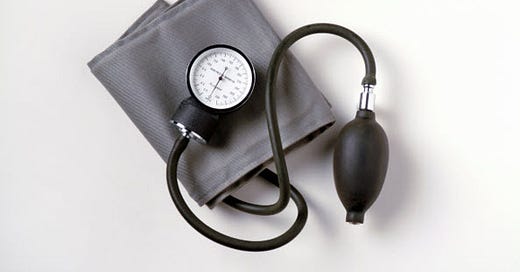Reimagining Healthcare Delivery: What South Africa Can Learn from Global Telemedicine Models
Global lessons that could transform SA’s healthcare system and save billions
When I tell people that telemedicine could fundamentally transform South Africa's healthcare system, they often assume I'm talking about convenience.
But that's thinking far too small.
What if I told you that the right telemedicine model could:
Significantly reduce hospital admissions?
Cut waiting times for specialist care by months, not days?
Save billions in unnecessary infrastructure costs?
And potentially make National Health Insurance affordable?
This isn't speculation. It's already happening in healthcare systems around the world, and TruMD is pioneering the revolution in South Africa.
The UK's NHS Experience: Virtual First is More Than a Pandemic Response
In 2019, the UK's National Health Service was in crisis. Waiting times were at record highs, GP (general practitioner) shortages were critical, and costs were spiralling.
The NHS did something remarkable - they piloted a localised "Virtual First" approach.
The results were stunning:
70% of consultations were successfully handled via telemedicine.
Hospital referrals decreased by 35%.
Patient satisfaction scores increased.
Access by underserved communities improved dramatically.
When interviewed last year, one NHS executive said something I'll never forget: "We thought this was a stopgap during COVID. We now realise it's the future of primary care delivery."
The NHS discovered what we at TruMD have known for years: Telemedicine isn't just a convenient alternative to traditional care. When implemented correctly, it's a superior model for many healthcare interactions.
Dubai's Gatekeeping Revolution: How Digital Triage Transforms Healthcare Economics
Dubai's healthcare transformation offers another powerful lesson for South Africa. Facing rapidly escalating costs, Dubai implemented a digital gatekeeping system that requires primary care consultation before accessing specialist services or emergency departments (except for true emergencies).
The system works like this:
Patients first consult with primary care physicians via telemedicine.
Those physicians determine if specialist care is needed.
Only patients who genuinely require specialist intervention are referred.
This reduces unnecessary specialist consultations and ED visits.
The results have been remarkable:
30% reduction in unnecessary specialist consultations.
45% decrease in non-emergency ED visits.
Significant cost savings across the system.
Faster access for those who genuinely need specialist care.
This gatekeeping function is precisely what South Africa's overburdened system needs. Currently, our public hospitals are overwhelmed with cases that could be handled at the primary care level, while those needing specialist care face enormous waiting lists.
At TruMD, we've implemented a similar triage approach with our corporate clients. The data shows that approximately 60% of health concerns can be fully resolved through telemedicine consultations, without needing in-person care.
How Telemedicine Reduces Hospital Waiting Times: The Evidence
One of the most persistent challenges in South Africa's healthcare system is the extraordinary waiting times patients face - both for routine care and specialist consultations.
Global evidence shows how telemedicine directly addresses this:
In Spain's Andalusia region:
Telemedicine triage reduced specialist waiting times from 10 months to 2 months.
Hospital admissions decreased by 50% for certain chronic conditions.
Patients received care plans within 48 hours instead of waiting weeks.
In Canada's Ontario province:
Virtual consultations with specialists reduced waiting times by 40%.
80% of cases were successfully managed without in-person visits.
Patient outcomes improved due to earlier intervention.
These aren't small-scale pilot programs - they're system-wide implementations serving millions of people. And the implications for South Africa are profound.
At TruMD, we've seen similar results in our microcosm. When we implemented our system with a manufacturing client, specialist referrals decreased dramatically in the first year. Why? Because our primary care physicians could handle many cases that would otherwise have been unnecessarily escalated.
The Path Forward: A Hybrid Model for South Africa
The future of healthcare in South Africa isn't about choosing between digital and traditional models. It's about creating an integrated system that leverages the strengths of both.
What might this look like?
Digital-first / Telemedicine primary care for most routine consultations.
Strategic deployment of physical infrastructure where truly needed.
Specialist care augmented by telemedicine for pre- and post-treatment support.
Remote monitoring for chronic condition management.
AI-assisted triage to optimise resource allocation.
This is the TruMD model. It’s not just a telemedicine platform but a comprehensive healthcare delivery system designed specifically for South African realities.
Worth Noting
We don't need to repeat expensive mistakes or reinvent proven solutions. The global evidence is clear—telemedicine is not just a stopgap or a supplement to traditional care. It fundamentally reimagines how healthcare can be made more accessible and affordable.
If you want to learn more about how TruMD can optimise your organisation’s healthcare, email me, and we will arrange for you to meet the team and visit the call centre.
To your health,
Sam Sader
Founder, TruMD




